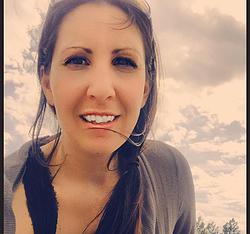 Today on the blog we are featuring Jennifer Spak, RMT, CYI. Jennifer is a local business owner who helps mamas and babes!
Today on the blog we are featuring Jennifer Spak, RMT, CYI. Jennifer is a local business owner who helps mamas and babes!
—–
When people learn that I specialize in fascial tissue as well in treatment of Infants, I am immediately asked a series of follow-up questions. Over the years, I’ve discovered that the same questions have been asked time and again. I thought I would share some of the most common with Little Lotus Yoga followers.
Why do babies need treatment?
Birthing is tough work. Babies can be held in difficult positions due to the duration of the labour and delivery. Babies that have had a long labour, have been under constant contractions and strains for many hours. At the other end, babies that have short labours are pushed through a birth canal that their head and bodies may not have had time to adjust and mould to. In both cases, it can result in torsions and strains in the baby that may develop into more significant issues.
What are the most common things you treat babies for?
Most have come in from a referral from their Midwife or Lactation Consultant but it’s not necessary for treatment. Many have been diagnosed with a Tongue tie or a lip tie that is impacting breastfeeding. Others have digestive issues like Reflux, constipation/diarrhea or colic. Some come with birthing injuries that have occurred because the baby got stuck (e.g. shoulder dystocia) or because of medical interventions like cesarians, vacuum or forceps. Others still come with Torticollis (a distinct head lean to one side while rotated to the opposite side)
What is the youngest age you will treat? How late is too late for treatment?
I have had several babies that started treatment at only 5 days old. The earlier the intervention, the better the outcome. Babies respond very well to treatment as their issue is relatively new in their tissue and doesn’t have a long neurological memory that needs a long time to retrain.
It’s never too late for one to be treated. It is true that it is easier for me as the therapist to treat a problem when it’s still new and while the baby is very young, yet it is never too late and I have treated children of all ages. The toughest age is from 1.5 years to 3 years, but only because they are quite busy and I need to be very creative in my treatment approach to get the necessary work done.
What techniques do you use and does it hurt?
I have trained extensively in Myofascial Release and Craniosacral Therapy amongst other modalities .These are very gentle techniques that will not harm the body as a primary principle of each is to never force anything. When a technique is forced upon the body, your body’s natural defence mechanisms will kick in and resist what is being done. This can render the technique useless and do more harm than good. That being said, it doesn’t mean that some of the techniques I do aren’t uncomfortable. Often when I work on an area of an infant that is sensitive to them, they cry for a short while. The crying usually ends when the tissue restriction releases.
How can your treatment help babies with Tongue and Lip ties?
The main tissue in our body is a connective tissue called fascia. This tissue is found enveloping every single cell in our body, approximately 50 trillion give or take. It is a continuous 3D network that connects all areas of our bodies together like a full body stocking. Restrictions in one area can impact other areas of the body.
Large groups of these fascia enveloped cells all wrapped together can be more easily identified as things we know to be organs, muscles, tendons, cartilage and ligaments to name a few. The fascial tissue gives our body support and structure as well as dissipates energy from movement and impact throughout the body. When this tissue has restrictions, it will limit the normal movement that would occur in that area resulting in a dysfunction. To learn about what causes some of those restrictions you can check out www.livewellmfr.com.
The frenulum under the tongue and lip is made up of this tissue. Previously it was thought that this tissue could not be stretched but the newest research shows that the collagen portion of the fascial tissue (one of two components of fascia) can in fact be stretched. There are specific approaches that must be used to effectively stretch this tissue.
In regards to ties, because our tissue is continuous throughout our body, often the restrictions are deeper than just under the tongue or lip. I regularly see them continue through the jaw, chest and pelvis.
My child has had a release for their tie done, do I still need treatment?
In almost all cases I would say yes. Following the principle that restrictions are often deeper than what we can see on the surface, I regularly see babies after their releases. The release can make a significant change on the infants range of movement, but the secondary restrictions need to be addressed to allow for optimal outcomes. Parents often get an initial improvement post release, but still have some problems with breastfeeding that haven’t been resolved. Many of the local dentists that perform the laser frenectomies have acknowledged this and recommend Craniosacral therapy as post intervention care.
What else do you treat?
As important as it is for baby to be treated, at some point I turn my focus to mom. Pregnancy and birth can do a lot to our body. I check in with mom to see how her milk production is, if she’s having issues with blockages or mastitis. We also discuss what is happening in her pelvis and if there are any problems with pain, instability or incontinence. I will assess her fully to see how things are aligned and what compensations are being made. Together we will set some goals and I will use similar techniques to address any alignment and tissues restrictions found.
Because I like to keep myself well challenged, I continue to treat both men and women for a long list of musculoskeletal issues such as migraines, postural alignment issues, pelvic pain, women’s health, strains and tears amongst many other things.
How can I find you and get more information?
 You can find my contact information and learn more on my website at www.livewellmfr.com
You can find my contact information and learn more on my website at www.livewellmfr.com
Jennifer Spak is a Registered Massage Therapist that specializes in Fascial Tissue dysfunctions. She has been practicing for 14 years in east end ottawa with a focus on Infant Care, Women’s Health as well as Orthopaedic care for both Men and Women.

Leave a Reply